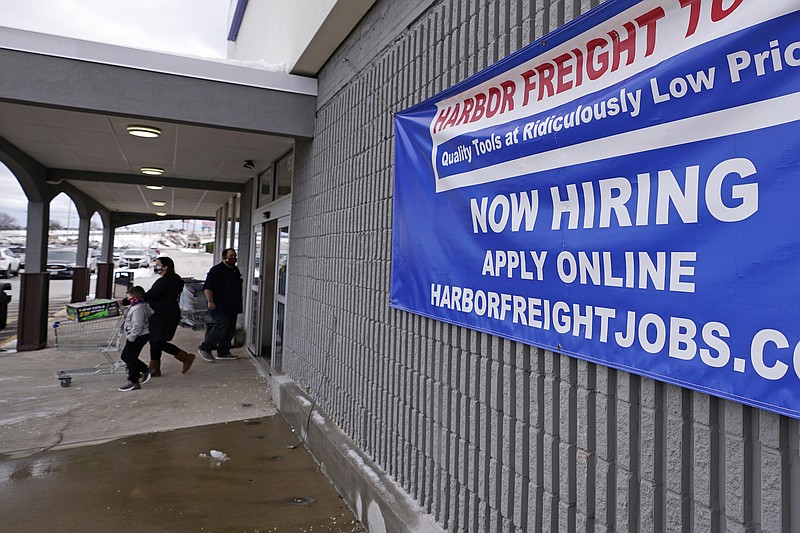The number of new unemployment claims filed in Tennessee since the pandemic hit the economy last March topped 1 million last week as initial claims for assistance continued to mount as the pandemic has worsened.
The Tennessee Department of Labor and Workforce Development reported that new claims for jobless assistance rose by 5,400 last week to 21,954 - the highest weekly level in the state since last July when the federal government was still paying an extra $600 a week in unemployment benefits. Hamilton County initial jobless claims increased last week by 339 new claims to 1,009 filings from newly unemployed Chattanoogans.
Some of the jump reflects post-holiday cutbacks at some retail and restaurant businesses following the Christmas and New Year's gift-buying season and holiday celebrations. But the resurgent virus has likely escalated the recent layoffs.
"While prospects for the economy later in 2021 are upbeat, the labor market recovery has taken a step backward," said Nancy Vanden Houten, an economist at Oxford Economics, "and we expect claims to remain elevated, with the risk that they rise from last week's levels."
In Georgia, regular UI initial claims rose last week by 5,581 to 37,039. Nationwide, the number of people seeking unemployment aid jumped last week to 965,000, the most since late August.
The latest figures for jobless claims, issued Thursday by the Labor Department, remain at levels never seen until the virus struck. Before the pandemic, weekly applications typically numbered around 225,000. They spiked to nearly 7 million last spring, after nationwide shutdowns took effect. Applications declined over the summer but have been stuck above 700,000 since September.
The high pace of layoffs coincides with an economy that has faltered as consumers have avoided traveling, shopping and eating out in the face of soaring viral caseloads. More than 4,300 deaths were reported Tuesday, another record high.
Last week was the 43rd straight week total initial claims were greater than the worst week of the Great Recession.
Most states like Tennessee provide 26 weeks of regular benefits, so many workers are exhausting their regular state UI benefits. In the most recent data, however, continuing claims for regular state UI rose nationwide by 199,000, meaning new continuing claims were outpacing exhaustions.
After an individual exhausts regular state benefits, they can move onto Pandemic Emergency Unemployment Compensation (PEUC), which is an additional 24 weeks of regular state UI (the December COVID-19 relief bill increased the number of weeks of PEUC eligibility by 11, from 13 to 24).
The personal finance web site WalletHub calculates that Tennessee had the eighth biggest increase in jobless claims among the 50 states last week. Tennessee's jobless rate had fallen below the U.S. average last fall, but rising claims could push unemployment higher in January.
Economists say that once coronavirus vaccines are more widely distributed, a broader recovery should take hold in the second half of the year. The incoming Biden administration, along with a now fully Democratic-led House and Senate, is also expected to push more rescue aid and spending measures that could accelerate growth.
Yet many analysts also worry that with millions of Americans still unemployed and as many as one in six small companies going out of business, people who have been hurt most by the downturn won't likely benefit from a recovery anytime soon.
Last week's applications for aid might have been elevated in part because state employment offices had been closed over the holidays, requiring some jobless people to wait until last week to apply. The addition of a $300-a-week federal unemployment benefit, as part of a rescue aid package enacted late last month, may have also encouraged more people to apply, Vanden Houten said.
In addition to last week's first-time applications for unemployment aid, the government said Thursday that 5.3 million Americans are continuing to receive state jobless benefits, up from 5.1 million in the previous week. It suggests that fewer people who are out of work are finding jobs.
About 11.6 million people received jobless aid from two federal programs in the week that ended Dec. 26, the latest period for which data is available. One of those programs provides extended benefits to people who have exhausted their state aid. The other supplies benefits to self-employed and contract workers.
Those two programs had expired near the end of December. They were belatedly renewed, through mid-March, in the $900 billion rescue aid package that Congress approved and President Donald Trump signed into law. That legislation also included $600 relief checks for most adults and a supplemental unemployment benefit payment of $300 a week. Congressional Democrats favor boosting the checks to $2,000 and extending federal aid beyond March, as does President-elect Joe Biden.
Nonetheless, many companies seem reluctant to sharply ramp up hiring. A government report Tuesday showed that employers advertised fewer open jobs in November than in October.
- Compiled by Dave Flessner
